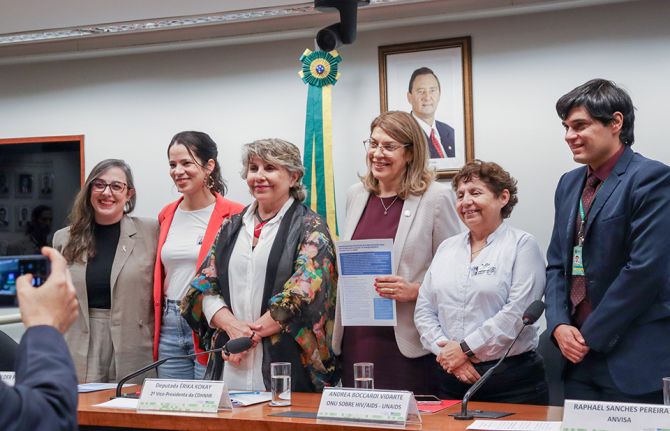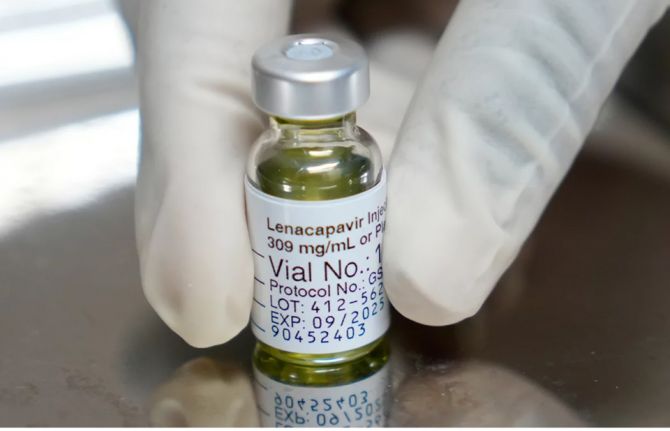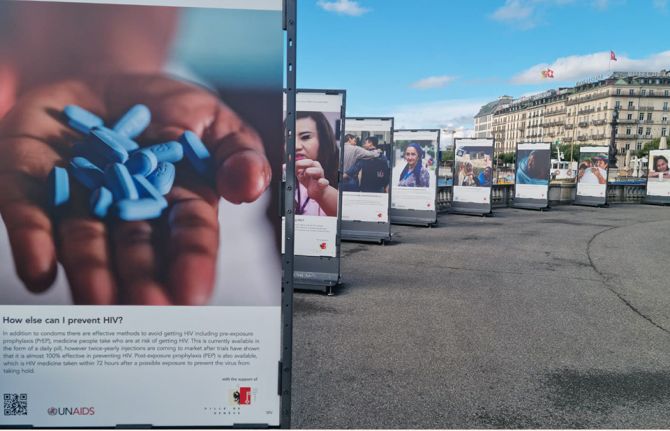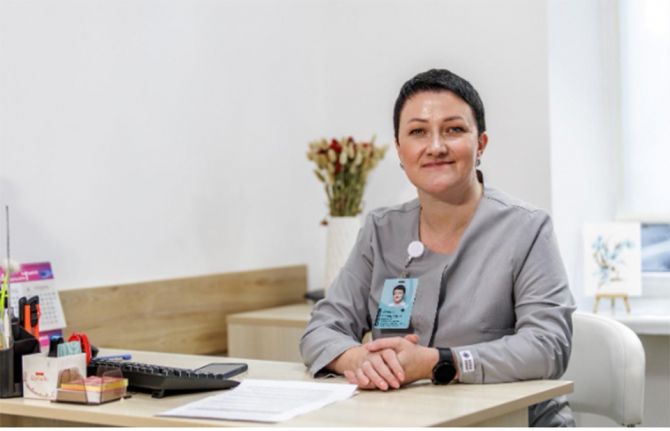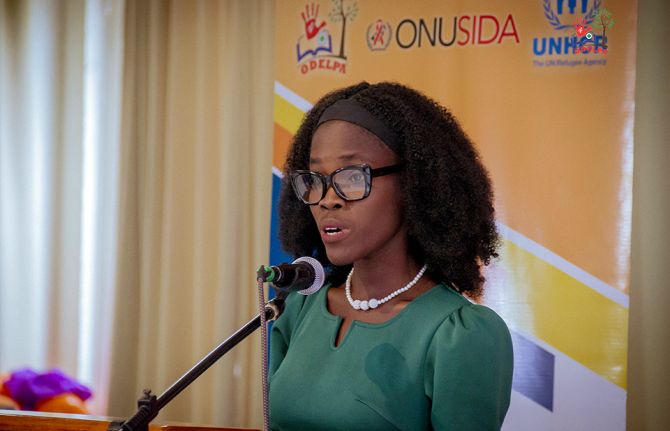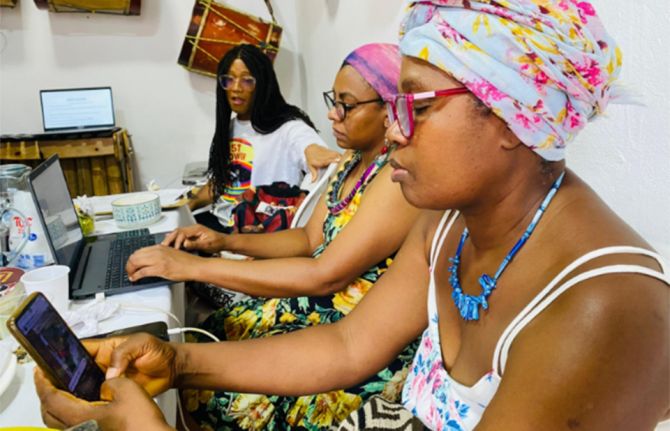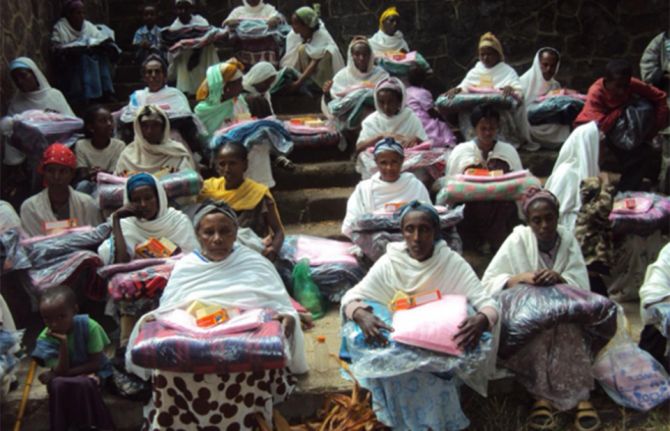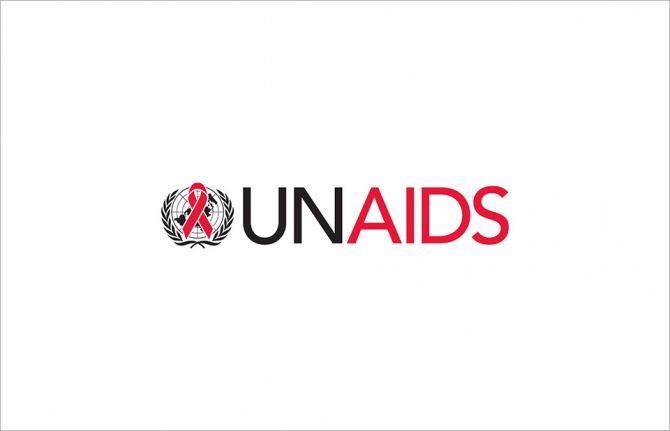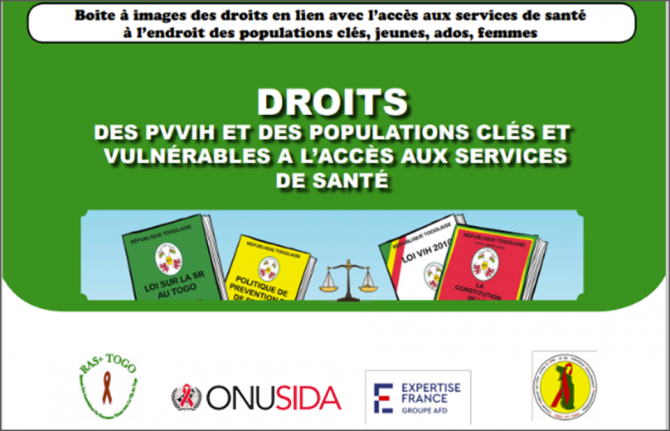
Press Statement
Empowering girls advances HIV response
11 October 2016 11 October 2016GENEVA, 11 October 2016—On this International Day of the Girl Child, UNAIDS strongly supports the call by the United Nations for better age- and sex-specific data that can be used to improve the health and well-being of girls aged 10–19 years old.
Discrimination and disadvantage have held back the potential of girls and women for centuries. This generation of girls—an estimated 1.1 billion globally in 2016, the largest in history—has the power to change the world, but only if they can advance their knowledge, agency and freedom to make their own life-defining choices and reach their full potential.
“Girls count! We need to know what counts for girls, to make sure that they start life HIV-free, stay HIV-free or remain AIDS-free,” said UNAIDS Executive Director, Michel Sidibé.
Globally in 2015:
- Around 120 million girls (aged 15–19 years old) worldwide had experienced rape or other forced sexual acts at some point in their lives.
- In high HIV prevalence areas, women exposed to intimate partner violence were 1.5 times more likely to acquire HIV, with child marriage a risk factor for intimate partner violence.
- Almost 1100 adolescent girls and young women (aged 15–24 years old) were newly infected with HIV every day.
- About 70% of adolescent girls and young women (aged 15–24 years old) did not have comprehensive and correct knowledge of HIV.
- HIV, human papillomavirus (HPV) and cervical cancer are strongly linked. Giving HPV vaccine to all girls aged 9 to 13, regardless of HIV status, will prevent cervical cancer in later life.
The bold targets of the 2016 Political Declaration on Ending AIDS that promote the empowerment of women and girls uphold rights and gender equality as central to achieving the Sustainable Development Goals. They provide our greatest opportunity to guaranteeing that this generation of girls reach their full potential. The collection and analysis of age- and sex-specific data enriched and informed by the experiences and voices of the world’s girls and young women will put them on the Fast-Track to ending AIDS.
UNAIDS
The Joint United Nations Programme on HIV/AIDS (UNAIDS) leads and inspires the world to achieve its shared vision of zero new HIV infections, zero discrimination and zero AIDS-related deaths. UNAIDS unites the efforts of 11 UN organizations—UNHCR, UNICEF, WFP, UNDP, UNFPA, UNODC, UN Women, ILO, UNESCO, WHO and the World Bank—and works closely with global and national partners towards ending the AIDS epidemic by 2030 as part of the Sustainable Development Goals. Learn more at unaids.org and connect with us on Facebook, Twitter, Instagram and YouTube.
Press centre
Download the printable version (PDF)

Press Statement
BRICS countries underline the imperative of advancing cooperation and action on HIV and tuberculosis
17 October 2016 17 October 2016GENEVA, 17 October 2016—At the close of the 2016 BRICS Summit in Goa, India, leaders of the BRICS countries (Brazil, the Russian Federation, India, China and South Africa) have underlined the imperative of advancing cooperation and action to respond to the epidemics of HIV and tuberculosis.
In their declaration, the leaders emphasized the importance of cooperation among BRICS countries in promoting the research and development of local pharmaceuticals and diagnostic tools in order to facilitate access to safe, effective, quality and affordable medicines.
The Goa Declaration, issued at the end of the two-day summit, also took note of efforts made by BRICS health ministers to achieve the 90–90–90 targets by 2020, whereby 90% of people living with HIV will know their HIV status, 90% of people who know their HIV-positive status will access treatment and 90% of people on treatment will have suppressed viral loads. The declaration also noted the United Nations High-Level Meeting on Ending AIDS, which took place in New York, United States of America, in June 2016, at which countries committed to following a Fast-Track response to ending the AIDS epidemic by 2030.
At the end of 2015, almost one in three people living with HIV resided in a BRICS country, while those nations also accounted for almost a third of new HIV infections.
“The continued leadership of the BRICS countries will be essential to ending the AIDS epidemic,” said UNAIDS Executive Director, Michel Sidibé. “South–South cooperation will be key to achieving the 90–90–90 targets, which are about accelerating and intensifying our efforts in the response to HIV in order to save lives,” he added.
The 90–90–90 targets are part of a Fast-Track response that aims to achieve ambitious millstones by 2020, including fewer than 500 000 people newly infected with HIV, fewer than 500 000 people dying from AIDS-related illnesses and the elimination of HIV-related discrimination.
It is estimated that a failure to Fast-Track would result in an additional 17.6 million new HIV infections worldwide and an additional 10.8 million AIDS-related deaths between 2016 and 2030.
UNAIDS
The Joint United Nations Programme on HIV/AIDS (UNAIDS) leads and inspires the world to achieve its shared vision of zero new HIV infections, zero discrimination and zero AIDS-related deaths. UNAIDS unites the efforts of 11 UN organizations—UNHCR, UNICEF, WFP, UNDP, UNFPA, UNODC, UN Women, ILO, UNESCO, WHO and the World Bank—and works closely with global and national partners towards ending the AIDS epidemic by 2030 as part of the Sustainable Development Goals. Learn more at unaids.org and connect with us on Facebook, Twitter, Instagram and YouTube.

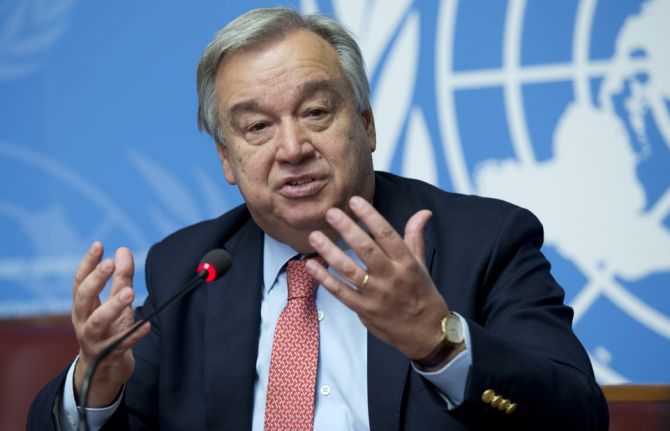
Press Statement
UNAIDS warmly welcomes new United Nations Secretary-General António Guterres
13 October 2016 13 October 2016GENEVA, 13 October 2016—UNAIDS extends a warm welcome to the new Secretary-General of the United Nations, António Guterres. Mr Guterres will succeed the current United Nations Secretary-General, Ban Ki-moon, who leaves office at the end of this year, having held the position since January 2007.
The Executive Director of UNAIDS, Michel Sidibé, said, “I congratulate António Guterres on his appointment as Secretary-General. An experienced statesman, multilateralist and advocate for the most vulnerable, he will be a fantastic Secretary-General.”
UNAIDS looks forward to working with Mr Guterres towards achieving the Sustainable Development Goals, including ending the AIDS epidemic by 2030.
Mr Guterres is a strong advocate for access to HIV services and respect for the rights of people living with HIV. In his vision statement for Secretary-General he stressed that the “dignity and worth of the person should be fully pursued.”
Mr Guterres has spent more than 30 years in government and public service, including serving as the Prime Minister of Portugal from 1995 to 2002. In 2005, he was elected as the United Nations High Commissioner for Refugees by the United Nations General Assembly, serving for a decade until 2015.
Under his leadership, the Office of the United Nations High Commissioner for Refugees played an important role in ensuring access to HIV services for refugees, internally displaced people and other people affected by displacement and HIV.
UNAIDS
The Joint United Nations Programme on HIV/AIDS (UNAIDS) leads and inspires the world to achieve its shared vision of zero new HIV infections, zero discrimination and zero AIDS-related deaths. UNAIDS unites the efforts of 11 UN organizations—UNHCR, UNICEF, WFP, UNDP, UNFPA, UNODC, UN Women, ILO, UNESCO, WHO and the World Bank—and works closely with global and national partners towards ending the AIDS epidemic by 2030 as part of the Sustainable Development Goals. Learn more at unaids.org and connect with us on Facebook, Twitter, Instagram and YouTube.
Press centre
Download the printable version (PDF)

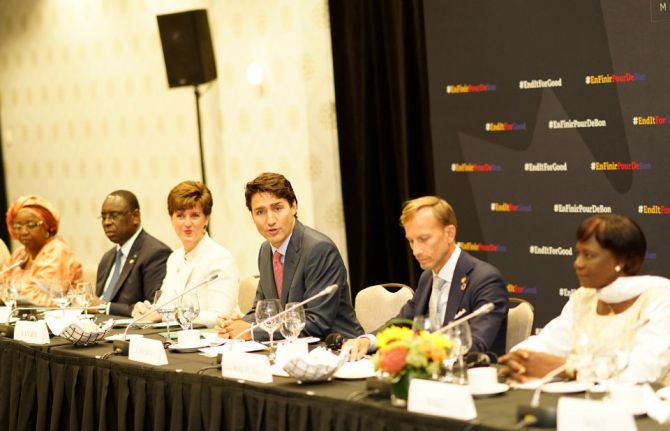
Press Statement
UNAIDS encouraged for future of HIV funding as donors pledge full support to the Global Fund
20 September 2016 20 September 2016GENEVA, 20 September 2016—UNAIDS applauds all donors and partners for their demonstration of a strong commitment to the Global Fund to Fight AIDS, Tuberculosis and Malaria (Global Fund). At its Fifth Replenishment Conference in Montreal, Canada, donors pledged US$ 12.9 billion of the US$ 13 billion called for by the Global Fund for the three-year period 2017–2019.
For the three diseases, the Global Fund estimates that the amount raised will save 8 million lives, avert 300 million infections and help build sustainable systems for health.
“The Global Fund is an essential partner to address the continuing epidemics of AIDS, tuberculosis and malaria,” said Michel Sidibé, Executive Director of UNAIDS. “Through an effective response to these diseases we can improve the lives of millions of people and simultaneously address poverty, inequality and discrimination. This replenishment is an enormous contribution to our collective ambition of ending AIDS.”
The new financial commitments represent a significant increase compared to the US$ 12 billion in pledges made at the previous replenishment conference. Private donors and innovative financing mechanisms more than doubled their pledges to the Global Fund compared to the last conference. Several new countries made pledges and others increased commitments, including Canada, Germany and Japan. In addition to pledging to the Global Fund, Côte d’Ivoire announced a pledge of US$ 1 million to support the work of UNAIDS.
In 2015, an estimated US$ 19 billion was available from all sources for the global response to HIV in low- and middle-income countries. Around 57% of resources were from domestic public and private resources and 43% were from international sources, including 23% from United States of America Government bilateral contributions, 9% from the Global Fund, 3% from philanthropies and the rest from other bilateral and multilateral sources.
To meet global targets to end AIDS as a public health threat by 2030, UNAIDS estimates that US$ 26.2 billion will be needed in 2020, around US$ 7 billion more than was available in 2015.
UNAIDS
The Joint United Nations Programme on HIV/AIDS (UNAIDS) leads and inspires the world to achieve its shared vision of zero new HIV infections, zero discrimination and zero AIDS-related deaths. UNAIDS unites the efforts of 11 UN organizations—UNHCR, UNICEF, WFP, UNDP, UNFPA, UNODC, UN Women, ILO, UNESCO, WHO and the World Bank—and works closely with global and national partners towards ending the AIDS epidemic by 2030 as part of the Sustainable Development Goals. Learn more at unaids.org and connect with us on Facebook, Twitter, Instagram and YouTube.
Press centre
Download the printable version (PDF)

Press Statement
UNAIDS urges donors to commit to fully funding the Global Fund
15 September 2016 15 September 2016GENEVA, 15 September 2016—Ahead of the Fifth Replenishment Conference of the Global Fund to Fight AIDS, Tuberculosis, and Malaria (Global Fund), to be held in Montreal, Canada, on 16 and 17 September, UNAIDS is calling on donors to fully fund the Global Fund. The Global Fund, a financing institution that raises and invests funds to support HIV, tuberculosis and malaria programmes, is calling for US$ 13 billion over the three-year period 2017–2019.
The Global Fund’s investment in HIV programmes has played an important part in the incredible progress made by countries over the past 15 years. This progress has inspired global commitments to end the AIDS epidemic as a public health threat by 2030, which will require scaling up and front-loading investments.
“A successful replenishment of the Global Fund is critical,” said Michel Sidibé, Executive Director of UNAIDS. “We are entering a make or break point that will determine whether we end AIDS or whether the epidemic will be prolonged indefinitely.”
In June 2016, the United Nations General Assembly adopted a Political Declaration in which countries committed to a Fast-Track response to reach three key targets by 2020:
- Reducing new HIV infections to fewer than 500 000 globally.
- Reducing AIDS-related deaths to fewer than 500 000 globally.
- Eliminating HIV-related stigma and discrimination.
All partners in the AIDS response need to be well-equipped and adequately funded to enable the AIDS response to overcome unresolved systemic and structural challenges and achieve the historic milestone of ending the AIDS epidemic as part of the Sustainable Development Goals.
Since the start of the epidemic, more than 78 million people have become infected with HIV and 35 million people have died of AIDS-related illnesses. UNAIDS has recently sounded the alarm about the epidemiological implications of a persistently high level of new HIV infections among adults, even as record numbers of people living with HIV have access to life-saving antiretroviral therapy. UNAIDS warns that if the number of new HIV infections rebounds, the AIDS epidemic could become impossible to control. Failing to meet global funding targets will result in more people becoming infected with HIV and more AIDS-related deaths.
“The Global Fund is a key anchor in our shared commitment to ending AIDS and needs the full political and financial backing of its donors,” said Mr Sidibé.
UNAIDS
The Joint United Nations Programme on HIV/AIDS (UNAIDS) leads and inspires the world to achieve its shared vision of zero new HIV infections, zero discrimination and zero AIDS-related deaths. UNAIDS unites the efforts of 11 UN organizations—UNHCR, UNICEF, WFP, UNDP, UNFPA, UNODC, UN Women, ILO, UNESCO, WHO and the World Bank—and works closely with global and national partners towards ending the AIDS epidemic by 2030 as part of the Sustainable Development Goals. Learn more at unaids.org and connect with us on Facebook, Twitter, Instagram and YouTube.
Press centre
Download the printable version (PDF)

Press Statement
UNAIDS condemns the attack on Orlando nightclub that killed and injured dozens of people from the LGTBI community
14 June 2016 14 June 2016UNAIDS joins the United Nations Secretary-General in extending condolences to the families of the victims
GENEVA, 14 June 2016— UNAIDS expresses solidarity with all lesbian, gay, bisexual, transgender and intersex (LGBTI) people and condemns the attack on a nightclub in Orlando, United States of America, in which 49 people were killed and more than 50 others injured. UNAIDS joins the United Nations Secretary-General, Ban Ki-moon, in extending our deepest condolences to the families of the victims and expresses its solidarity with the government and people of the United States of America and the global LGBTI community.
“There is no place for hatred and violence based on sexual orientation in today’s world,” said Michel Sidibé, UNAIDS Executive Director. “We have to build inclusive societies where all people are treated with respect and dignity and can lead lives free of fear and exclusion.”
LGBTI people face a wide range of human rights violations. The United Nations and others have documented widespread physical and psychological violence against LGBTI people in all regions of the world.
In September 2015, UNAIDS, together with 11 other United Nations entities, released a joint statement calling for an end to violence and discrimination against LGBTI people. The joint statement highlights the need to protect, respect and fulfil the rights of LGBTI people to live free from violence, persecution, discrimination and stigma.
UNAIDS
The Joint United Nations Programme on HIV/AIDS (UNAIDS) leads and inspires the world to achieve its shared vision of zero new HIV infections, zero discrimination and zero AIDS-related deaths. UNAIDS unites the efforts of 11 UN organizations—UNHCR, UNICEF, WFP, UNDP, UNFPA, UNODC, UN Women, ILO, UNESCO, WHO and the World Bank—and works closely with global and national partners towards ending the AIDS epidemic by 2030 as part of the Sustainable Development Goals. Learn more at unaids.org and connect with us on Facebook, Twitter, Instagram and YouTube.
Press centre
Download the printable version (PDF)

Press Statement
UNAIDS welcomes United States of America’s announcement of a new US$ 100 million investment fund to increase access to HIV services for key populations
09 June 2016 09 June 2016Following the adoption of the 2016 United Nations General Assembly Political Declaration new investment fund recognizes the need to ensure no one is left behind in the AIDS response
NEW YORK/GENEVA, 9 June 2016—UNAIDS welcomes the United States’ announcement of a US$ 100 million Key Populations Investment Fund to expand access to HIV services. This fund created by the US President’s Emergency Plan for AIDS Relief (PEPFAR) will help close the gap between people who have access and people who are being left behind.
UNAIDS welcomes the focus of the investment towards reducing stigma and discrimination, empowering community leadership in design and delivery of services and increasing the quality of data on key populations. Key populations—sex workers, gay men and other men who have sex with men, people who inject drugs, transgender people and prisoners—have a right to health and human rights and must have full access to HIV prevention, treatment, social protection and legal services.
Announced at the United Nations General Assembly High-Level Meeting on Ending AIDS, Deborah Birx, United States Global AIDS Coordinator and Special Representative for Global Health Diplomacy, affirmed the US government’s commitment to health and human rights of key populations.
“It is unacceptable that key populations still face stigma, discrimination, and violence, which impede their ability to access quality HIV services.” said Ambassador Birx. “PEPFAR stands firmly and unequivocally with and for key populations, defined by UNAIDS as gay men and other men who have sex with men, transgender people, sex workers, and people who inject drugs, and prisoners, and we are deeply committed to protecting and promoting their health and human rights.”
This multi-year and comprehensive approach is critical to accelerate results and will help sustain community-led efforts including service delivery and addressing the barriers of stigma and discrimination that keep people from accessing essential services.
“UNAIDS stands in solidarity with everyone—especially key populations—who are blocked from services because of who they are or who they love”, said Michel Sidibé, Executive Director of UNAIDS. “This bold initiative will quicken the pace of action—we need more actors to join this movement and UNAIDS is ready to support implementation.”
Civil society and key populations will be closely involved in the design and the implementation of the new investment fund.
New data released by UNAIDS shows that more than 90% of new HIV infections in central Asia, Europe, North America, the Middle East and North Africa in 2014 were among people from key populations and their sexual partners. In the Asia and Pacific region, Latin America and the Caribbean, people from key populations and their sexual partners accounted for nearly two thirds of new infections. In sub Saharan Africa, key populations accounted for more than 20% of new infections, and HIV prevalence among these populations is often extremely high.
Key populations are present in all parts of the world and epidemiological evidence shows that they are globally at higher risk of HIV. People who inject drugs, are 24 times more likely to acquire HIV than adults in the general population, sex workers are 10 times more likely to acquire HIV, men who have sex with men are 24 times more likely to acquire HIV, transgender people are 49 times more likely to be living with HIV, and prisoners, are five times more likely to be living with HIV than adults in the general population.
UNAIDS
The Joint United Nations Programme on HIV/AIDS (UNAIDS) leads and inspires the world to achieve its shared vision of zero new HIV infections, zero discrimination and zero AIDS-related deaths. UNAIDS unites the efforts of 11 UN organizations—UNHCR, UNICEF, WFP, UNDP, UNFPA, UNODC, UN Women, ILO, UNESCO, WHO and the World Bank—and works closely with global and national partners towards ending the AIDS epidemic by 2030 as part of the Sustainable Development Goals. Learn more at unaids.org and connect with us on Facebook, Twitter, Instagram and YouTube.
Press centre
Download the printable version (PDF)

Press Statement
2016 United Nations Political Declaration on Ending AIDS sets world on the Fast-Track to end the epidemic by 2030
08 June 2016 08 June 2016NEW YORK/GENEVA, 8 June 2016—UNAIDS welcomes the new goals, targets and commitments of the 2016 United Nations General Assembly Political Declaration on Ending AIDS. Countries have agreed to a historic and urgent agenda to accelerate efforts towards ending the AIDS epidemic by 2030. The Political Declaration provides a global mandate to Fast-Track the AIDS response over the next five years.
Global leaders recognized that no country has ended AIDS and that no country can afford to step back from responding to HIV. As Member States begin to implement the 2030 Agenda for Sustainable Development, it was acknowledged that ending the AIDS epidemic by 2030 would only be possible if Fast-Track Targets are met by 2020.
The targets and commitments, adopted in the Political Declaration on Ending AIDS: on the Fast-Track to Accelerate the Fight against HIV and to End the AIDS Epidemic by 2030, will guide the world in addressing the critical linkages between health, development, injustice, inequality, poverty and conflict.
A shared vision
The 2016 Political Declaration calls on the world to achieve the following goals in support of the 2030 Agenda for Sustainable Development:
- Reduce new HIV infections to fewer than 500 000 globally by 2020.
- Reduce AIDS-related deaths to fewer than 500 000 globally by 2020.
- Eliminate HIV-related stigma and discrimination by 2020.
The Political Declaration affirms that these goals can only be realized with strong leadership and the engagement of people living with HIV, communities and civil society.
Doubling the number of people on treatment
At the end of 2015, the number of people on HIV treatment reached 17 million, exceeding the 2015 target of reaching 15 million people. Leaders pledged to ensure that 90% of people (children, adolescents and adults) living with HIV know their status, 90% of people living with HIV who know their status are receiving treatment and 90% of people on treatment have suppressed viral loads.
Countries further committed to urgently address low treatment coverage rates among children living with HIV.
- Implement the 90–90–90 treatment target to ensure that 30 million people living with HIV access treatment by 2020.
- Ensure that 1.6 million children living with HIV access HIV treatment by 2018.
Accelerating prevention outreach
HIV prevention targets encourage countries to promote access to tailored comprehensive HIV prevention services for all women and adolescent girls, migrants, key populations—sex workers; men who have sex with men; people who inject drugs; transgender people; and prisoners. Special efforts will be made to intensify outreach in locations of high HIV transmission with services for populations globally at higher risk of infection.
The Political Declaration recognizes the importance of location and population, as the epidemic is distinctive in each country and region and encourages regional action and accountability by setting regional targets on prevention and treatment for children, young people and adults, including to:
- Reach all women, adolescent girls and key populations with comprehensive HIV prevention services, including harm reduction by 2020.
- Reach 3 million people at higher risk of HIV infection with pre-exposure prophylaxis by 2020.
- Reach 25 million young men in high HIV incidence areas with voluntarily medical male circumcision and make 20 billion condoms available in low- and middle-income countries by 2020.
The Political Declaration, however, fails to bring the needed visibility to key populations most affected in different regions.
Stopping new HIV infections among children
The commitment to eliminate new HIV infections among children and to ensure that their mothers’ health and well-being are sustained is reaffirmed in the new Political Declaration with an emphasis on ensuring that mothers have access to immediate and life-long antiretroviral therapy.
- Eliminate new HIV infections among children by reducing new infections by 95% in every region by 2020.
A new focus on women, adolescent girls, young people and gender equality
Two thousand new HIV infections occur every day among young people, a third of all new infections, but only 28% of young women have accurate knowledge about HIV. Leaders have committed to supporting and enabling young people to play a critical role in leading the response by promoting the full realization of their right to health and comprehensive education on sexual and reproductive health and HIV prevention. The Political Declaration also recognizes the importance of universal access to sexual and reproductive health and reproductive rights.
Leaders placed strong emphasis on addressing the immense burden of the epidemic on women, especially young women and adolescent girls in sub-Saharan Africa.
The Political Declaration commits to achieve gender equality, to invest in women’s leadership and to end all forms of violence and discrimination against women and girls, in order to increase their capacity to protect themselves from HIV. The engagement of men and boys in doing so is indispensable.
- Reduce to below 100 000 per year the number of adolescent girls and young women aged 15–24 years old newly infected with HIV globally by 2020.
- Eliminate gender inequalities and gender-based abuse and violence.
- End all forms of violence and discrimination against women and girls, such as gender-based, sexual, domestic and intimate partner violence, including in conflict, post-conflict and humanitarian settings.
- Encourage and support the leadership of young people and scale up comprehensive education on sexual and reproductive health and protect their human rights.
The Political Declaration, however, stops short of including an explicit target for comprehensive sexuality education, despite the reality that the bulk of the epidemic in most regions is driven by sexual transmission. In sub-Saharan Africa, more than 98% of new HIV infections are sexually transmitted. The Political Declaration excludes sexual rights, including the right to information, autonomy, consent and non-discrimination, which are central to an effective AIDS response.
The right to health belongs to everyone, everywhere
The Political Declaration further recognizes that progress in protecting and promoting the human rights of people living with, at risk of and affected by HIV has been far from adequate, and that human rights violations remain a major obstacle in the response to HIV. Member States pledge to review and reform legislation that may create barriers or reinforce stigma and discrimination and to promote access to non-discriminatory health-care services, including for populations at higher risk of HIV, specifically sex workers; men who have sex with men; people who inject drugs; transgender people; and prisoners.
- Review and reform laws that reinforce stigma and discrimination and restrict access to services, travel restrictions, mandatory testing and punitive laws related to HIV non-disclosure, exposure and transmission by 2020.
- Eliminate barriers, including stigma and discrimination, in health-care settings by 2020.
- Strengthen national social and child protection systems to ensure that, by 2020, 75% of people living with, at risk of, and affected by HIV benefit from HIV-sensitive social protection.
AIDS out of isolation
The Political Declaration affirms that the AIDS response will spur progress across the entire 2030 Agenda for Sustainable Development. It calls for universal health coverage and access to social protection. Adopting targets beyond HIV, Member States emphasized the continued importance of an integrated approach to a range of health issues, including tuberculosis, hepatitis B and C, cervical cancer, human papillomavirus, noncommunicable diseases and emerging and re-emerging diseases.
- Reduce tuberculosis-related AIDS deaths by 75% by 2020.
- Reach 90% of all people who need tuberculosis treatment, including 90% of populations at higher risk, and achieve at least 90% treatment success by 2020.
- Reduce by 30% new cases of chronic viral hepatitis B and C by 2020.
- Treat 5 million people with hepatitis B and treat 3 million people with chronic hepatitis C by 2020.
Financing the end of AIDS
To ensure that these targets can be achieved, leaders made ambitious and concrete commitments for financing and effective allocations to implement a Fast-Track AIDS response. Member States also called for US$ 13 billion for the Fifth Replenishment of the Global Fund to Fight AIDS, Tuberculosis and Malaria. Member States encouraged the enhanced strategic engagement of the private sector to support countries with investments and service delivery for strengthening supply chains, workplace initiatives and social marketing of health commodities and behaviour change.
- Increase and front-load investments to close the resource gap by investing at least US$ 26 billion a year in the AIDS response by 2020.
- Invest at least a quarter of AIDS spending on HIV prevention and invest at least 6% of all global AIDS resources for social enablers, including advocacy, community and political mobilization, community monitoring, outreach programmes and public communication by 2020, and ensure that at least 30% of all service delivery by 2030 is community-led.
- Address regulations, policies and practices that prevent access to safe, efficacious and affordable generic medicines, diagnostics and related health technologies, including by ensuring the full use of the Agreement on Trade-Related Aspects of Intellectual Property Rights (TRIPS) flexibilities, and strengthen regional and local capacity to develop, manufacture and deliver quality-assured affordable health products.
Accountability and sustainability
Member States made a number of commitments to enhance monitoring and accountability, urging the more active involvement of people living with, affected by and at risk of HIV. They call on the United Nations Secretary-General, with support from UNAIDS, to continue to provide annual reviews to the General Assembly and decided to convene a High-Level Meeting on HIV and AIDS to review progress in the AIDS response across its social, economic and political dimensions. The Political Declaration also calls on Member States to ensure that the United Nations and UNAIDS is fit to deliver on the 2030 Agenda for Sustainable Development.
Moving forward, AIDS stakeholders are encouraged to intensify pressure to address the most entrenched obstacles to progress and ensure that the Political Declaration can fulfil its role as an instrument for dignity and social justice.
UNAIDS
The Joint United Nations Programme on HIV/AIDS (UNAIDS) leads and inspires the world to achieve its shared vision of zero new HIV infections, zero discrimination and zero AIDS-related deaths. UNAIDS unites the efforts of 11 UN organizations—UNHCR, UNICEF, WFP, UNDP, UNFPA, UNODC, UN Women, ILO, UNESCO, WHO and the World Bank—and works closely with global and national partners towards ending the AIDS epidemic by 2030 as part of the Sustainable Development Goals. Learn more at unaids.org and connect with us on Facebook, Twitter, Instagram and YouTube.
Documents
Press centre
Download the printable version (PDF)

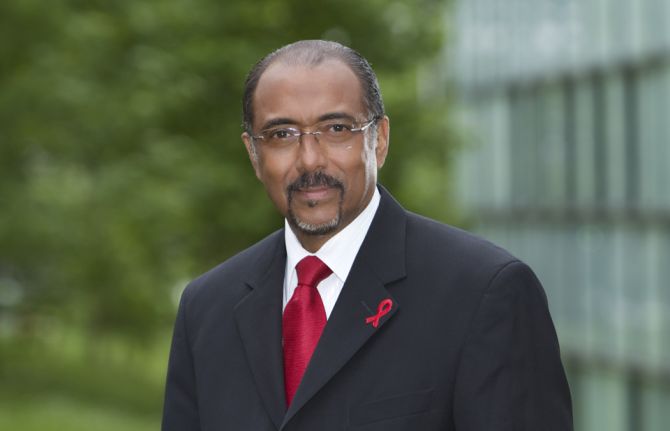
Press Statement
Calling on innovators, implementers, investors, activists and leaders to Fast-Track ending the AIDS epidemic by 2030
04 June 2016 04 June 2016UNAIDS Executive Director, Michel Sidibé, stresses the importance of a people-centred approach at up-coming United Nations General Assembly High-Level Meeting on Ending AIDS
NEW YORK/GENEVA, 3 June 2016—The AIDS epidemic has defined the global health agenda for an entire generation. The first AIDS-related deaths were diagnosed over 30 years ago and HIV rapidly became a global crisis. The epidemic threatened all countries and had the power to destabilize the most vulnerable nations. By 2000, AIDS had wiped out decades of development gains.
Today, many nations have taken great steps in getting ahead of the epidemic. South Africa, for example, has reduced the number of new HIV infections from 600 000 in 2000 to 340 000 in 2014. Life expectancy has risen in many of the most severely affected countries in sub-Saharan Africa as access to HIV prevention, testing and treatment has been scaled up. Worldwide, there are now more than 17 million people living with HIV accessing live-saving antiretroviral treatment.
But as world leaders grapple with a growing number of global concerns and threats, including massive displacement, climate change and an uncertain economic outlook—it would be a misstep to let up on the response to HIV. Here are three reasons why AIDS deserves continued attention and a Fast-Track approach:
- To restore dignity, health and hope to the people left behind in the AIDS response.
- To build robust and resilient societies ready to face future health crises
- To serve as a beacon for what can be achieved through international solidarity and political will.
Our generation has been presented with an opportunity that must not be thrown away. We have the technology, medicines and tools to end the AIDS epidemic by 2030, averting more than 17 million new HIV infections and saving almost 11 million lives.
In a few days, the United Nations General Assembly High-Level Meeting on Ending AIDS will bring people together around a common objective: ending AIDS by 2030 within the framework of the Sustainable Development Goals.
This global platform for innovators, implementers, investors, activists and leaders will challenge all of us to chart a course to end the AIDS epidemic by 2030. It will take our combined efforts to source sustainable solutions to close the gaps and reach a set of new global targets.
These targets are urgently needed. AIDS-related illnesses are the leading cause of death among women of reproductive age globally and the primary cause of death among adolescents in Africa. Stigma and discrimination continue to stop people accessing health care, including HIV prevention and treatment services that reduce new infections and save lives. In some regions of the world, the numbers of HIV infections are actually increasing.
Currently, of the 36.7 million people living with HIV, less than half are accessing treatment. We are failing to reach the people most in need. These include adolescent girls and young women, sex workers, gay men and other men who have sex with men, transgender people, prisoners and people who inject drugs.
Achieving the 90-90-90 treatment target by 2020 will be a key factor to ending the AIDS epidemic. This calls for 90% of people living with HIV to know their status, 90% of people who know their HIV positive status to access antiretroviral treatment and 90% of people on treatment to have suppressed viral loads.
Meeting this treatment target will set the world on course to ending the AIDS epidemic by 2030. But bold leadership and stronger investment are required. By 2020, combined domestic and international resources will need to increase by about one third to peak at an estimated US$ 26.2 billion to achieve this vision. A lack of investment now will result in the epidemic being prolonged indefinitely and that would be a false economy.
A Fast-Track approach to ending the AIDS epidemic requires a set of ambitious time-bound targets, including reducing the number of people newly infected with HIV from 2.1 million in 2015 to fewer than 500 000 in 2020, reducing the number of people dying from AIDS-related illnesses from 1.1 million in 2015 to fewer than 500 000 in 2020 and eliminating HIV-related discrimination.
In New York, brave decisions and new ambitious commitments need to be made—based on human rights and leaving no one behind—if we are to meet the Sustainable Development Goal of ending the AIDS epidemic as a public health threat by 2030.
AIDS is not over yet but it can be.
Press centre
Download the printable version (PDF)

